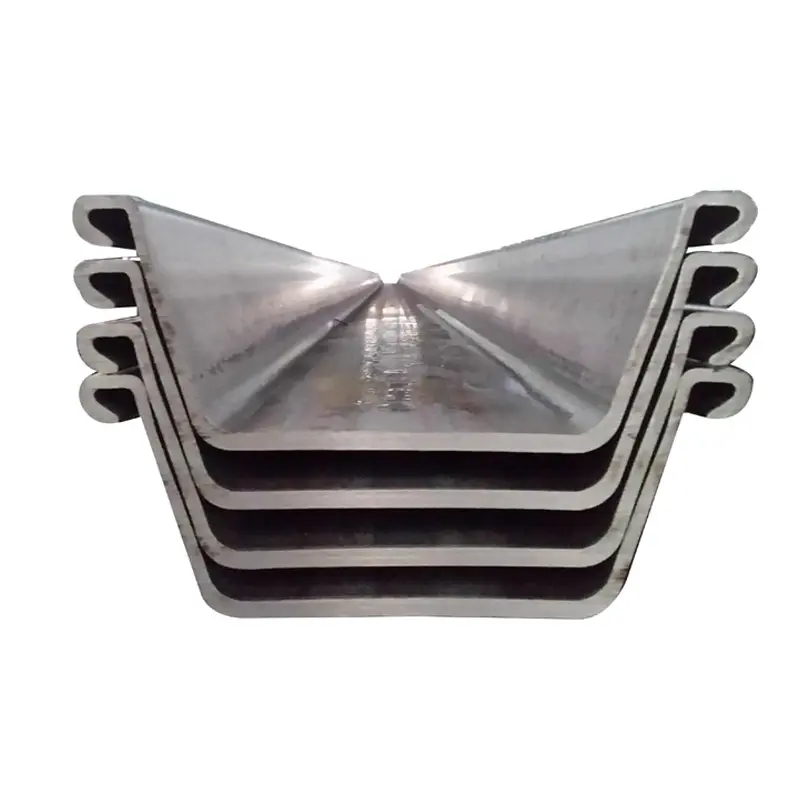Corrosion resistant steel sheet pile is engineered to mitigate degradation in aggressive environments, such as marine settings, industrial zones with chemical contamination, or soils with high salinity/ acidity. These sheet piles utilize advanced materials and surface treatments to extend service life, reducing maintenance costs and structural failures caused by corrosion. Primary materials include stainless steel (304, 316 grades), weathering steel (Corten steel), and high performance alloy steels with added chromium, nickel, or molybdenum to form passive oxide layers. For carbon steel based piles, protective coatings are critical: hot dip galvanization (ISO 1461) provides a sacrificial zinc layer, while duplex systems (zinc primer + epoxy topcoat) offer dual protection for severe conditions. Metallurgical advancements include microalloyed steels with improved pitting resistance, tested using standardized methods like the ASTM G48 ferric chloride pitting test. The design of corrosion resistant sheet piles balances material cost with expected service life, often using life cycle analysis to justify higher initial investments in harsh environments. Applications include waterfront structures in tropical regions with high humidity, chemical plant retaining walls, and landfills where leachate may contain corrosive substances. Installation considerations involve avoiding coating damage during driving, with protective padding or post installation touch up of damaged areas. Engineering design incorporates corrosion allowances in wall thickness calculations, based on predicted corrosion rates derived from site specific environmental data (pH, chloride content, soil resistivity). Non destructive testing methods like electrochemical impedance spectroscopy (EIS) can monitor coating integrity in service, enabling proactive maintenance. International standards such as NACE RP0176 provide guidelines for corrosion control in steel sheet piles, emphasizing the importance of surface preparation (SSPC SP10 near white blast cleaning) and coating application consistency. The trade off between initial cost and long term durability makes corrosion resistant sheet piles a strategic choice for projects where downtime or replacement is impractical, such as nuclear power plant foundations or offshore oil and gas facilities. Research into self healing coatings and bio inspired anti corrosion technologies promises further advancements, potentially reducing reliance on traditional zinc based treatments and enhancing sustainability through lower material and energy use.


